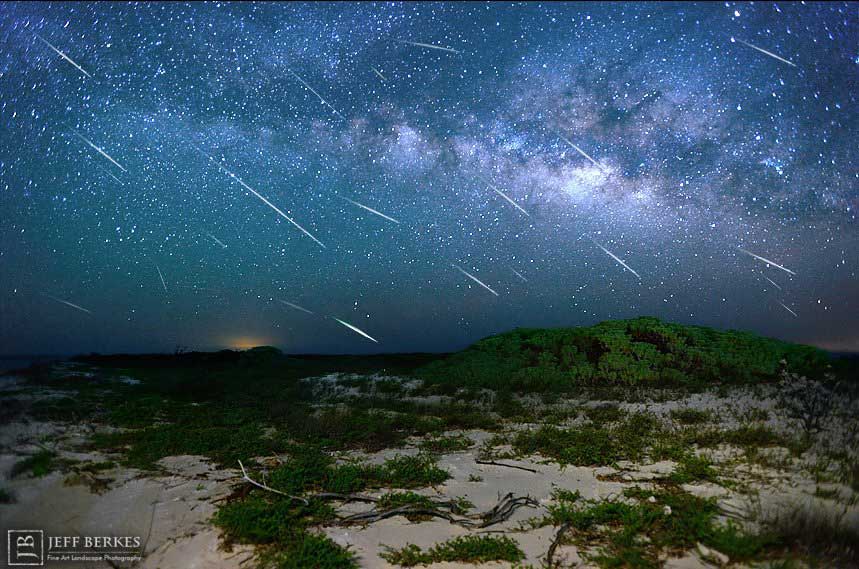The Draconids meteor shower will reach its peak activity today, on the night of Wednesday, October 9. The number of “shooting stars” at this time can reach 15 per hour. The peak of the meteor shower is expected at approximately 16:00 Moscow time, but shooting stars can also be observed after dusk, the Moscow Planetarium reported.
Meteors are flashes from small celestial bodies burning up in the Earth’s atmosphere. The Draconids stream, formed by comet 21P/Giacobini-Zinner, will intensify to a maximum around 16:00 Moscow time on October 8.
The meteors of the October meteor shower Draconids are very slow and have yellow and reddish hues. They are catching up with the Earth, so the speed of their entry into the atmosphere is low and is about 20 km/s.
“The area where the flashes appear in the sky is located near the asterism (group of stars) Caput Dragon, which is an irregular ladle of four stars. The best time to observe meteors is in the pre-dawn hours of October 9 over the northwestern horizon,” the planetarium told TASS, noting that it is better to choose a place away from city lights.

The Draconids are a meteor shower that occurs annually in early October. They are named after the constellation Draco, as their radiant, the point from which the meteors appear to emanate, is in that constellation. The shower is associated with comet 21P/Giacobini-Zinner, and as it approaches the Sun, more active outbursts can be observed.
At this time of year, the constellation Draco is clearly visible in the sky of the Northern Hemisphere. It looks like a zigzag line resembling the letter Z and is located above the constellation Ursa Major. The constellation Draco contains such objects as the Cat’s Eye Nebula (NGC 6543), the Tadpole Galaxy (UGC 10214), and the Spindle Galaxy (M 102).
It is not difficult to distinguish Draconid meteors in the starry sky: compared to other random meteors, Draconids are reddish and very slow. As noted in the Moscow Planetarium, this year the conditions for observing Draconids are favorable: the Moon will disappear behind the horizon after 18:30 Moscow time and will not interfere with observing the meteor shower. This year, from 5 to 15 meteors per hour are expected, but bursts are also possible – up to 100-400 meteors per hour.
As noted by the Moscow Planetarium, it was the Draconids that caused two of the most impressive meteor showers in the last century – in 1933 and 1946. Sometimes there are bursts of 20 to 500 meteors per hour, and in 1998 a short-term burst of activity reached 700 meteors per hour – such an amazing phenomenon could be observed by residents of the Far East and Siberia.
To comfortably enjoy this cosmic phenomenon, you should choose a place with minimal light pollution. The farther you are from city lights, the better the meteor shower will be visible.
Earlier, on the night of August 12-13, residents of the Northern Hemisphere were able to observe the Perseid meteor shower. This year, the spectacle was especially mesmerizing – falling stars lit up the night sky in combination with the polar lights. The peak of the meteor shower coincided with a strong magnetic storm that was recorded on Earth on August 12. This caused the northern lights, which were admired by residents of the entire Northern Hemisphere – including in the regions of Russia.




